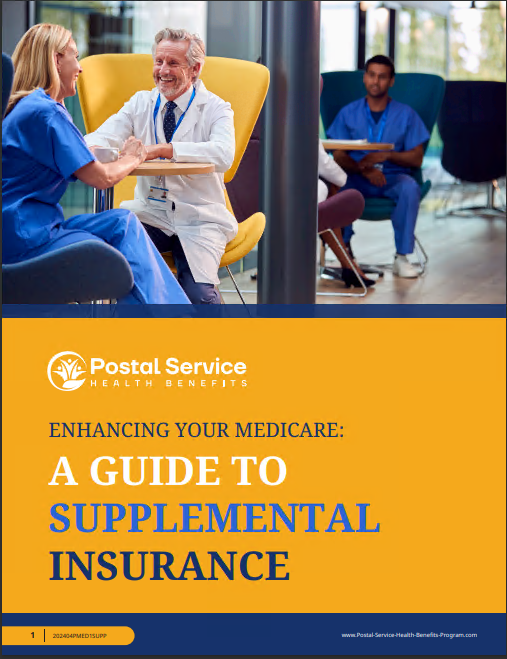Key Takeaways
- The Postal Service Health Benefits (PSHB) program marks a significant change for USPS employees and annuitants, with Open Season running from November 11, 2024, to December 9, 2024.
- Understanding the PSHB enrollment process and its importance can ensure a smooth transition and continued health coverage for 2025.
PSHB Enrollment Has Officially Started
If you’re part of the USPS workforce or an annuitant, you probably know that change is coming. The Postal Service Health Benefits (PSHB) program, set to launch on January 1, 2025, has officially begun its enrollment phase during the Open Season. Between November 11 and December 9, 2024, USPS employees and eligible retirees have the opportunity to review, compare, and choose their health plans for the upcoming year. But why is this shift so significant, and what steps should you take to ensure you’re making the best decision for your health coverage in 2025? Let’s dive in.
What Is the PSHB Program?
The PSHB program is a tailored health benefits system designed specifically for USPS employees, annuitants, and their eligible family members. It replaces the previous coverage under the Federal Employees Health Benefits (FEHB) program. The goal? To streamline health coverage, cater specifically to postal workers’ needs, and align health plans more closely with current healthcare trends.
This change aims to offer USPS members more customized options and potentially better integration with Medicare for those who qualify.
Why the Transition Matters
For many employees and annuitants, switching from a well-known system like FEHB to the PSHB can be daunting. However, understanding why this transition is happening can ease the process. The move was primarily designed to create a program tailored to the USPS, ensuring that resources and coverage plans are better aligned with the unique needs of postal workers and retirees. This could mean greater plan flexibility, potentially improved cost structures, and better support for long-term health management.
Open Season: Your Time to Enroll
The Open Season for PSHB enrollment is your window of opportunity to select or adjust your health plan for the next year. Missing this period could mean limited options later on, so it’s essential to act now. This year, Open Season runs from November 11 to December 9, 2024, and any changes you make will be effective starting January 1, 2025.
What You Need to Do During Open Season
- Review Your Current Plan: If you’re already enrolled in the FEHB, use this time to review how your current plan stacks up to the PSHB options. Automatic enrollment may transition you to a similar PSHB plan, but it’s wise to review the details and ensure it meets your needs.
- Compare Your Options: The PSHB program offers a variety of health plans, so take the time to compare them. Check factors like premiums, deductibles, and out-of-pocket maximums to make an informed choice that aligns with your health and budget needs.
- Consider Your Family’s Needs: If you’re covering family members, ensure the plan you choose provides the necessary benefits for everyone under your policy.
Automatic Enrollment and What It Means for You
If you’re currently in the FEHB, you’re likely to be automatically enrolled in a corresponding PSHB plan. But don’t let that comfort lull you into skipping a thorough review. Even though you’ll be transitioned automatically, there could be nuances in the new plans—coverage details, network changes, or different cost structures—that might be better suited to your specific needs.
Should You Make Changes?
Automatic enrollment is a safety net, not a tailored solution. During Open Season, consider whether the plan you’re automatically assigned matches your requirements. If not, take advantage of this enrollment period to switch to a different PSHB plan that may offer better benefits, coverage, or savings for you and your family.
The Role of Medicare Integration
One of the significant aspects of the PSHB program is its integration with Medicare Part B for Medicare-eligible annuitants and family members. Starting in 2025, some annuitants and dependents who are eligible for Medicare must enroll in Part B to maintain PSHB coverage. This shift aims to better coordinate benefits and potentially lower out-of-pocket expenses by having Medicare cover primary healthcare needs, with PSHB acting as secondary coverage.
Exceptions and Considerations
It’s worth noting that there are exceptions. For example, if you retired on or before January 1, 2025, and are not already enrolled in Medicare Part B, you might not be required to join. These details are crucial, so be sure to verify your individual situation to avoid surprises down the road.
Choosing the Best PSHB Plan for You
With several plans on offer, it can feel overwhelming to choose the right one. Here’s how to break it down:
1. Assess Your Healthcare Needs
Take a look at your recent medical history and consider your potential needs for the upcoming year. If you frequently visit specialists or require regular prescriptions, you might prioritize plans with lower co-pays or extensive network coverage.
2. Weigh Costs Beyond Premiums
While the premium is an essential factor, don’t forget to look at deductibles, co-pays, and out-of-pocket maximums. A plan with a lower premium might seem attractive but could lead to higher costs if you need more frequent care.
3. Check Network Availability
Make sure your preferred healthcare providers are within the network of the plan you choose. Out-of-network care can be more expensive or not covered at all.
Staying on Track During Open Season
With the enrollment period already open, here are some practical tips to make sure you’re ready before the deadline:
- Set a Reminder: Mark your calendar to revisit your options before December 9, 2024. This can help you avoid last-minute rushes or mistakes.
- Contact Support: If you’re unsure about the details of your current coverage or PSHB plans, reach out to USPS benefits support for clarity.
- Utilize Online Resources: Use comparison tools and resources available on the Office of Personnel Management’s PSHB page to get a better overview of your choices.
Making an Informed Choice for 2025
Deciding on your health plan for the upcoming year is not something to take lightly. By being proactive during Open Season and carefully reviewing your options, you can choose a PSHB plan that aligns with your health needs and financial situation. The transition to PSHB is a significant step forward for USPS employees and annuitants, and making an informed choice now can set you up for better healthcare coverage in 2025.
Wrapping Up Your PSHB Enrollment Journey
Navigating the shift to the PSHB program might feel like a big leap, but with a clear understanding of the process and a careful review of your options, you can make this transition with confidence. Open Season is your opportunity to lock in the best health plan for the next year, so don’t let it pass by without taking a closer look at what’s available.







